Occupational Safety Training for Operating Vibro Hammer Vehicles
99,000 ₫
Note: The above price is calculated for one person and may fluctuate depending on the number of participants in the course and market dynamics. For more accurate pricing support, please refer to the pricing table or contact our consulting staff directly.
Occupational safety is an important issue when operating a vibro hammer vehicles and needs to be addressed promptly to ensure the health and safety of workers and enhance the reputation of businesses here. The Occupational Safety Training course is one of the effective solutions to raise awareness of how to prevent workplace accidents for workers when operating a vibro hammer vehicles.
Table of Contents
Toggle1. Overview of Vibro Hammer Vehicles
a. What is a Vibro Hammer Vehicle?
A vibro hammer, also called a vibro hammer machine, is a type of equipment used in the construction industry to drive piles or pile structures into the ground using vibration principles. Specifically, the vibro hammer generates vibrations at the top of the pile or structure, causing it to penetrate the soil.
Using a vibro hammer increases efficiency and reduces the time required compared to manual pile driving or other traditional methods. It is an essential tool in constructing bridges, buildings, seaports, and other projects requiring secure pile installation.

b. How Vibro Hammer Vehicles Work
The operating principle of a vibro hammer is based on generating vibrations to drive piles or structures into the ground. Here is a detailed description of how a vibro hammer works:
- Generating Vibration:
- The machine has a vibration engine or vibration system, typically powered by electric or combustion engines.
- The engine produces vibrations at the required frequency and intensity.
- Transmitting Vibration:
- Vibrations are transmitted from the engine to the pile or structure via vibration transmission devices, usually vibration units or bolts.
- The pile or structure is positioned on the vibro hammer head, enhancing vibration intensity at the contact point.
- Driving into the Ground:
- Vibrations at the contact point between the pile and soil reduce friction, allowing the pile to penetrate the ground more efficiently.
- For soft soil, vibrations loosen the soil, decreasing resistance to pile penetration.
- Controlling Direction and Depth:
- The vibro hammer control system monitors and manages pile penetration.
- Measurement and control devices help determine the direction and depth of pile insertion accurately.

c. Industries Using Vibro Hammer Vehicles
Vibro hammer vehicles are mainly used in construction and infrastructure industries. Some sectors where vibro hammers are commonly applied include:
- Bridge and Road Construction: Vibro hammers are used to drive piles for bridge and road projects, ensuring stability and firm foundations.
- Seaport and Marine Construction: For ports and marine structures, vibro hammers drive piles for platforms, scaffolding, and other marine structures.
- Building and High-Rise Construction: Vibro hammers are used for large-scale building projects to install piles efficiently.
- Infrastructure Development: They are applied in infrastructure projects like railways, roads, and urban development.
- Energy Projects: In the energy sector, vibro hammers drive piles for wind farms, solar energy stations, or other energy-related infrastructure.
- Oil and Gas Projects: In oil and gas operations, vibro hammers install piles for offshore rigs, platforms, and related equipment.
2. Overview of Safety Training for Operating Vibro Hammer Vehicles
a. What is Occupational Safety Training?
- Occupational safety training for vibro hammer operators consists of sessions designed to raise awareness and prevent workplace accidents. Employees directly operating vibro hammer vehicles belong to Group 3.
- Training helps workers identify and prevent hazards, reducing the risk of workplace accidents during operations.
REGISTER FOR OCCUPATIONAL SAFETY TRAINING SERVICES
b. Training Duration
Initial Safety Training Duration:
- Total training time is at least 24 hours, including examination time.
- 8 hours of theory on policies and occupational safety and hygiene laws
- 8 hours of basic occupational safety and hygiene knowledge
- 4 hours of specialized training theory
- 2 hours of practical exercises in specialized training
- 2 hours of final theoretical examination
Safety training centers may split the course into multiple sessions depending on workers’ schedules. Typically, there are 6 training sessions over 3 days, if continuous attendance is possible.
Periodic Safety Training:
- Before the occupational safety card expires, workers must attend periodic safety training, with the duration at least 50% of the initial safety training.
Explanation: total periodic safety training must be at least 12 hours, including examination time. After completing the periodic course and passing the test, the worker is reissued or renewed the occupational safety card.
c. Training Content
| No. | TRAINING CONTENT | TRAINING TIME (HOURS) | |||
| Total | Including | ||||
| Theory | Practice | Examination | |||
| I | Policies and Laws on Occupational Safety and Hygiene | 8 | 8 | 0 | 0 |
| 1 | Overview of legal documents and regulations on occupational safety and hygiene. | 6 | 6 | ||
| 2 | Standards and technical regulations on occupational safety and hygiene. | 1 | 1 | ||
| 3 | Specific regulations by state management agencies regarding safety when constructing, expanding, or renovating facilities and machinery requiring strict occupational safety and hygiene compliance. | 1 | 1 | ||
| II | Basic Knowledge of Occupational Safety and Hygiene | 8 | 8 | 0 | 0 |
| 1 | Basic knowledge of hazards and harmful factors at the workplace. | 4 | 4 | ||
| 2 | Methods to improve working conditions. | 1 | 1 | ||
| 3 | Safety culture in production and business. | 1 | 1 | ||
| 4 | Rights and obligations of employers and employees; policies and regimes on occupational safety; roles and duties of safety officers. | 1 | 1 | ||
| 5 | Safety rules, signs, guidance, use of safety equipment and personal protective equipment; first aid skills, and occupational disease prevention. | 1 | 1 | ||
| III | Specialized Training Content | 6 | 4 | 2 | 0 |
| Comprehensive knowledge of machinery, devices, hazardous substances; risk analysis and management; safe work procedures with machinery and materials requiring strict safety standards. | 6 | 4 | 2 | ||
| IV | Final Examination of Safety Training | 2 | 2 | 0 | 0 |
| Total | 24 | 22 | 2 | ||
See more training content for all 6 groups
d. Occupational Safety Card
After completing safety training and passing the examination, workers are issued an occupational safety card (commonly referred to as Group 3 safety certificate).
Group 3 safety cards display information such as full name, date of birth, job, and specific working environment. It also includes training duration, red seal, and signature confirming course completion.
According to regulations in Clause 2 of Article 24, Decree 44/2016/ND-CP, there are two cases:
- If the employer and employee have a labor contract, the employer must sign and stamp the safety card after the worker completes the training from a certified safety training unit and passes the test.
- If the worker is freelance or seasonal, without a labor contract, the training unit must sign and stamp the safety card after the worker completes the training and passes the test.

3. Hazards When Operating a Vibratory Pile Hammer Vehicle
Operating a vibratory pile hammer vehicle can involve several hazards, and operators must follow safety measures to minimize risks. Below are some common hazards when operating a vibratory pile hammer vehicle:
- Risk of Engine Vibration Exposure: Workers near the vibratory pile hammer may be exposed to engine vibrations, which can cause damage to muscles and bones, especially if proper personal protective equipment (PPE) is not used.
- Risk of Injury from Vibrations: Strong vibrations from the vehicle can create discomfort and fatigue, and without proper PPE, workers may suffer from musculoskeletal injuries.
- Risk of Electric Shock: Failure to follow electrical safety procedures when working with the vehicle’s electrical systems can result in the risk of electric shock.
- Risk of Mobile Vehicle Accidents: During movement of the vibratory pile hammer, accidents may occur if the operator is inattentive or if the steering system malfunctions.
- Risk of Falling Materials: During piling or work on structures, materials may fall from height, posing injury risks to workers below.
- Potential Ground Impact: Operating the vibratory pile hammer may create ground impacts, which if not properly controlled, can endanger surrounding structures or reduce construction quality.

4. Safety Control Measures When Operating a Vibratory Pile Hammer Vehicle
To control and minimize occupational accidents when operating a vibratory pile hammer vehicle, safety measures must be strictly implemented. Below are some measures managers and workers can follow to ensure safety:
- Training and Guidance: Continuous and comprehensive training for operators is essential. They need to understand safety rules, operating procedures, and emergency response methods.
- Use of Personal Protective Equipment: Anyone working near the vehicle must wear full PPE, including helmets, safety goggles, fire-resistant clothing, gloves, and safety shoes.
- Regular Inspection and Maintenance: Establish a regular inspection and maintenance schedule for the vehicle to ensure all systems and components are functioning correctly.
- Vibration Control: Limit working time near the vehicle to reduce vibration exposure. Provide vibration protective equipment if prolonged work is required nearby.
- Movement Management: Define safe working zones and control vehicle movement. Avoid areas with workers and clearly mark safety zones.
- Ground Impact Monitoring: If the vehicle creates ground impacts, use monitoring equipment to ensure surrounding structures and the work environment are not affected.
- Compliance with Safety Rules: Ensure all personnel comply with safety regulations and industry standards. Avoid skipping safety measures.
- Use of Safety Devices: Utilize safety devices such as warning systems, lights, and automatic control systems to reduce accident risks.
- Hazard Zone Classification: Clearly classify and mark hazard zones around the vehicle, especially areas in direct contact with piles or structures.
- Electrical Source Control: Ensure the electrical supply to the vehicle is strictly controlled and complies with electrical safety regulations.
- Periodic inspection of the vehicle to detect early safety issues such as mechanical wear or failure, reducing the risk of occupational accidents.
5. Benefits of Occupational Safety Training
An Toàn Nam Việt provides enterprises with the following benefits after completing occupational safety training courses as stipulated in Decree 44/2016/ND-CP on occupational safety and hygiene:
- Workers can identify potential occupational hazards and take preventive measures to avoid accidents.
- Enterprises can establish risk prevention measures in production, operation, and maintenance processes.
- Reduce costs associated with occupational safety incidents.
- Uninterrupted production helps increase labor productivity and product quality.
- Ensure compliance with labor safety laws and avoid legal risks.
- Enhance enterprise reputation and professionalism, elevating the company brand.
An Toàn Nam Việt’s training courses are a preventive solution to external risks, helping individuals avoid dangers that could lead to injury or even death.
REGISTER FOR OCCUPATIONAL SAFETY TRAINING SERVICES
6. Customer Feedback After Completing Training Courses
An Toàn Nam Việt has accumulated many years of experience accompanying numerous enterprises across Vietnam, especially in the southern provinces. This responsibility is extremely valuable to us, which is why our Occupational Safety Training programs are increasingly professional. The growth of An Toàn Nam Việt has been fueled by positive feedback and suggestions from our clients. Below are some testimonials from partners we have served.
See more customer interviews after using our services at An Toàn Nam Việt
7. Training Capacity of An Toàn Nam Việt
An Toàn Nam Việt is a reputable and quality occupational safety training center in Vietnam. Our safety training courses are conducted continuously at production facilities, factories, and construction sites nationwide (all 63 provinces in Vietnam).
REGISTER FOR OCCUPATIONAL SAFETY TRAINING SERVICES
Occupational Safety Training License
- An Toàn Nam Việt has been inspected and certified by the Department of Safety under the Ministry of Labor – Invalids and Social Affairs to meet the requirements for occupational safety and hygiene training. This further strengthens our operational capacity in providing occupational safety training.

Training Materials and Lectures
- Before being used in occupational safety training courses, all materials are reviewed to ensure accuracy and effectiveness.
- Our instructors follow standardized teaching methods developed by An Toàn Nam Việt, based on expert research and practical experience to maximize knowledge absorption for trainees.
Facilities
- Control of classroom factors improves teaching efficiency and knowledge retention.
- Our training facilities are spacious, meet area and lighting standards, and are equipped with proper training equipment.
8. Nationwide Reputable Safety Training Center
At An Toàn Nam Việt, we prioritize professional occupational safety training. Teaching workers to protect themselves is part of building a safer workforce and contributing to the nation.
We carefully prepare all aspects of training, from tools and equipment to curriculum, materials, audio, and lighting.
Our instructors are experts with many years of experience, including research on hazard identification across industries and prevention methods.
The lessons are practical, engaging, and easy for workers to understand, always complying with Decree 44/2016/ND-CP.
This enables workers to learn hazard prevention measures and apply them appropriately in their work.
Our training center proudly provides professional, reputable occupational safety training with advantages such as:
- Competitive training costs with guaranteed quality.
- Flexible training schedules suitable for company production.
- Quick and legally compliant certification procedures.
- Experienced instructors with long-standing expertise.
- Controlled classroom conditions for optimal teaching and learning efficiency.
- Curricula tailored to enterprise occupational safety needs.
- Dedicated and professional service to support clients accurately and promptly.

9. Additional Occupational Safety Training Materials
- Occupational safety materials for operating excavators with hydraulic vibrating pile hammers
- Occupational safety training materials collection
- Occupational safety training test set
- Occupational safety multiple-choice test for operating excavators with hydraulic vibrating pile hammers
- Occupational safety training slides for operating vibratory pile hammer excavators
1 review for Occupational Safety Training for Operating Vibro Hammer Vehicles
No comments yet

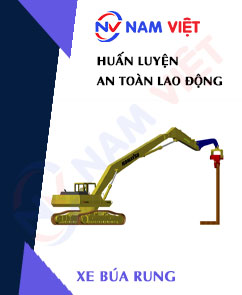
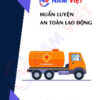
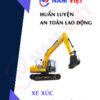



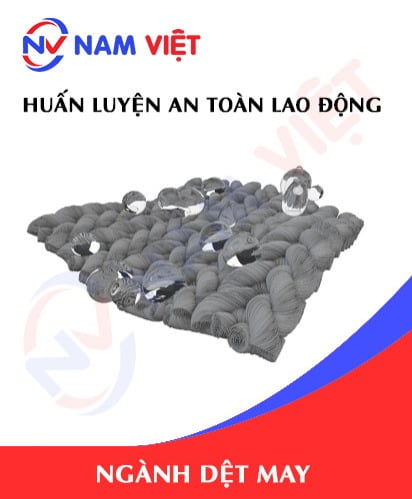
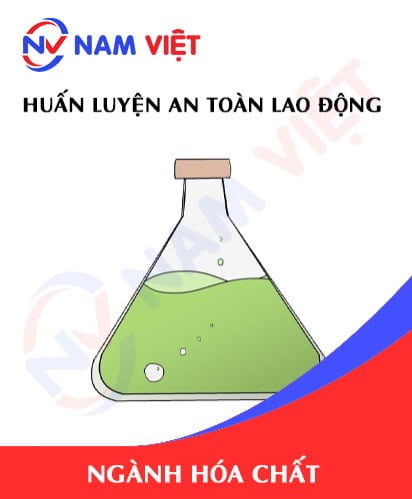
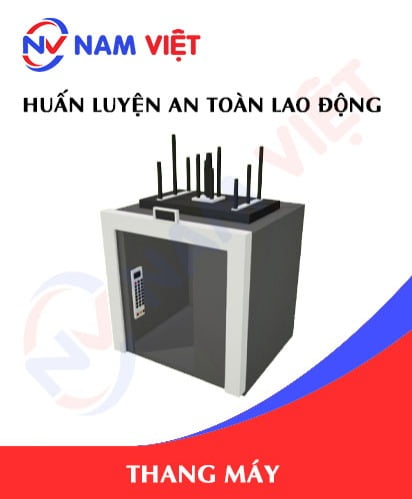
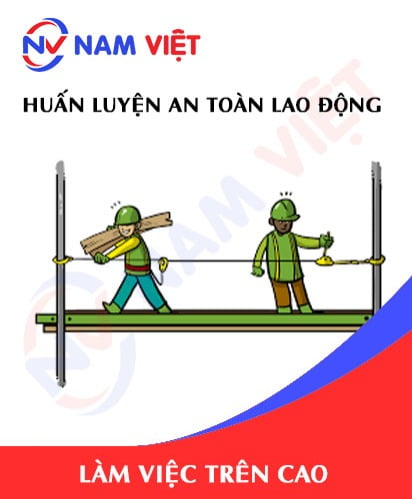


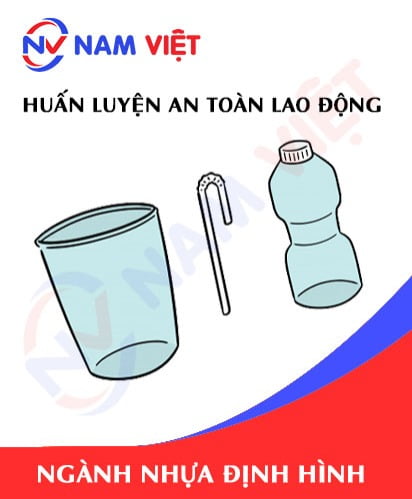

phanminhhang341
The lecturer teaches very lively and easy to understand!